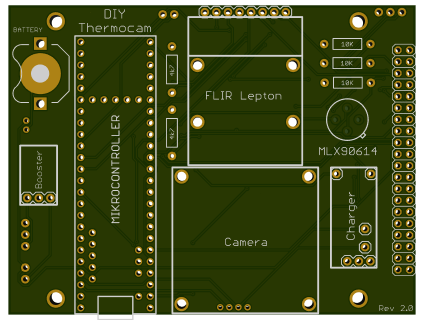20:56:32: Teensy Loader 1.31-boot-update, begin program
20:56:32: Listening for remote control on port 3149
20:56:32: initialized, showing main window
20:56:32: HID/win32: vid:046A pid:0023 ver:0220
20:56:32: HID/win32: vid:046A pid:0023 ver:0220
20:57:12: Verbose Info event
20:57:16: Verbose Info event
20:57:55: remote connection opened
20:57:55: remote cmd: "comment: Teensyduino 1.30-beta3 - WINDOWS"
20:57:55: remote cmd: "dir:f:\builddebb6a7a8b869e61df2be40f82065a39.tmp\"
20:57:55: remote cmd: "file:Blink.pde.hex"
20:57:55: File "Blink.pde.hex". 20636 bytes, 2% used
20:57:55: remote cmd: "status"
20:57:55: status data sent
20:57:55: remote cmd: "auto:on"
20:57:55: remote connection closed
20:57:56: remote connection opened
20:57:56: remote cmd: "comment: Teensyduino 1.30-beta3 - WINDOWS"
20:57:56: remote cmd: "dir:f:\builddebb6a7a8b869e61df2be40f82065a39.tmp\"
20:57:56: remote cmd: "file:Blink.pde.hex"
20:57:56: File "Blink.pde.hex". 20636 bytes, 2% used
20:57:56: remote cmd: "status"
20:57:56: status data sent
20:57:56: remote connection closed
20:57:56: remote connection opened
20:57:56: remote cmd: "status"
20:57:56: status data sent
20:57:56: remote cmd: "status"
20:57:56: status data sent
20:57:56: remote cmd: "status"
20:57:56: status data sent
20:57:56: remote cmd: "status"
20:57:56: status data sent
20:57:56: remote cmd: "status"
20:57:56: status data sent
20:57:56: remote cmd: "status"
20:57:56: status data sent
20:57:56: Device came online, code_size = 1048576
20:57:56: Board is: Teensy 3.6 (MK66FX1M0), version 1.02
20:57:56: File "Blink.pde.hex". 20636 bytes, 2% used
20:57:56: set background IMG_ONLINE
20:57:56: File "Blink.pde.hex". 20636 bytes, 2% used
20:57:56: elf size appears to be 1048576
20:57:56: elf binary data matches hex file
20:57:56: Code size from .elf file = 1048576
20:57:56: begin operation
20:57:56: Bootloader upgrade: 1.02 -> 1.03
20:57:56: flash, block=0, bs=1024
20:57:56: flash, block=1, bs=1024
20:57:56: flash, block=7, bs=1024
20:57:56: flash, block=8, bs=1024
20:57:56: HID/win32: waiting for device
20:57:56: HID/win32: waiting for device
20:57:56: HID/win32: waiting for device
20:57:56: HID/win32: waiting for device
20:57:56: HID/win32: waiting for device
20:57:56: HID/win32: waiting for device
20:57:56: HID/win32: waiting for device
20:57:56: remote cmd: "status"
20:57:56: status data sent
20:57:56: remote connection closed
20:57:56: flash, block=9, bs=1024
20:57:56: flash, block=10, bs=1024
20:57:56: flash, block=11, bs=1024
20:57:56: flash, block=12, bs=1024
20:57:56: flash, block=13, bs=1024
20:57:56: HID/win32: waiting for device
20:57:56: flash, block=14, bs=1024
20:57:56: flash, block=15, bs=1024
20:57:56: flash, block=16, bs=1024
20:57:56: flash, block=17, bs=1024
20:57:56: HID/win32: waiting for device
20:57:56: flash, block=18, bs=1024
20:57:56: flash, block=19, bs=1024
20:57:56: flash, block=20, bs=1024
20:57:56: flash, block=21, bs=1024
20:57:56: HID/win32: waiting for device
20:57:56: flash, block=22, bs=1024
20:57:56: flash, block=23, bs=1024
20:57:56: flash, block=24, bs=1024
20:57:56: flash, block=25, bs=1024
20:57:56: HID/win32: waiting for device
20:57:56: flash, block=26, bs=1024
20:57:56: flash, block=27, bs=1024
20:57:56: HID/win32: waiting for device
20:57:56: flash, block=28, bs=1024
20:57:56: flash, block=29, bs=1024
20:57:56: flash, block=30, bs=1024
20:57:56: HID/win32: waiting for device
20:57:56: flash, block=31, bs=1024
20:57:56: flash, block=32, bs=1024
20:57:56: HID/win32: waiting for device
20:57:56: flash, block=33, bs=1024
20:57:56: flash, block=34, bs=1024
20:57:56: flash, block=35, bs=1024
20:57:56: flash, block=36, bs=1024
20:57:57: HID/win32: waiting for device
20:57:57: flash, block=37, bs=1024
20:57:57: begin wait_until_offline
20:57:57: offline, waited 3
20:57:57: Bootloader update: 0% of estimated 8 seconds
20:57:57: HID/win32: vid:046A pid:0023 ver:0220
20:57:57: HID/win32: vid:046A pid:0023 ver:0220
20:57:57: Bootloader update: 1% of estimated 8 seconds
20:57:57: Bootloader update: 3% of estimated 8 seconds
20:57:57: Bootloader update: 4% of estimated 8 seconds
20:57:57: Bootloader update: 5% of estimated 8 seconds
20:57:57: Bootloader update: 6% of estimated 8 seconds
20:57:57: Bootloader update: 8% of estimated 8 seconds
20:57:57: Bootloader update: 9% of estimated 8 seconds
20:57:58: Bootloader update: 10% of estimated 8 seconds
20:57:58: Bootloader update: 11% of estimated 8 seconds
20:57:58: Bootloader update: 13% of estimated 8 seconds
20:57:58: Bootloader update: 14% of estimated 8 seconds
20:57:58: Bootloader update: 15% of estimated 8 seconds
20:57:58: Bootloader update: 16% of estimated 8 seconds
20:57:58: Bootloader update: 18% of estimated 8 seconds
20:57:58: Bootloader update: 19% of estimated 8 seconds
20:57:58: Bootloader update: 20% of estimated 8 seconds
20:57:59: Bootloader update: 21% of estimated 8 seconds
20:57:59: Bootloader update: 23% of estimated 8 seconds
20:57:59: Bootloader update: 24% of estimated 8 seconds
20:57:59: Bootloader update: 25% of estimated 8 seconds
20:57:59: Bootloader update: 26% of estimated 8 seconds
20:57:59: Bootloader update: 28% of estimated 8 seconds
20:57:59: Bootloader update: 29% of estimated 8 seconds
20:57:59: Bootloader update: 30% of estimated 8 seconds
20:57:59: Bootloader update: 31% of estimated 8 seconds
20:58:00: Bootloader update: 33% of estimated 8 seconds
20:58:00: Bootloader update finished, 2.6 seconds
20:58:00: Board is: Teensy 3.6 (MK66FX1M0), version 1.03
20:58:00: flash, block=0, bs=1024, auto=1
20:58:00: flash, block=1, bs=1024, auto=1
20:58:00: flash, block=2, bs=1024, auto=1
20:58:00: flash, block=3, bs=1024, auto=1
20:58:00: HID/win32: waiting for device
20:58:00: HID/win32: waiting for device
20:58:00: HID/win32: waiting for device
20:58:00: HID/win32: waiting for device
20:58:00: HID/win32: waiting for device
20:58:00: HID/win32: waiting for device
20:58:00: HID/win32: waiting for device
20:58:00: HID/win32: waiting for device
20:58:00: HID/win32: waiting for device
20:58:00: HID/win32: waiting for device
20:58:00: HID/win32: waiting for device
20:58:00: HID/win32: waiting for device
20:58:00: flash, block=4, bs=1024, auto=1
20:58:00: flash, block=5, bs=1024, auto=1
20:58:00: flash, block=6, bs=1024, auto=1
20:58:00: HID/win32: waiting for device
20:58:00: flash, block=7, bs=1024, auto=1
20:58:00: flash, block=8, bs=1024, auto=1
20:58:00: HID/win32: waiting for device
20:58:00: flash, block=9, bs=1024, auto=1
20:58:00: flash, block=10, bs=1024, auto=1
20:58:00: flash, block=11, bs=1024, auto=1
20:58:00: HID/win32: waiting for device
20:58:00: flash, block=12, bs=1024, auto=1
20:58:00: flash, block=13, bs=1024, auto=1
20:58:00: flash, block=14, bs=1024, auto=1
20:58:00: HID/win32: waiting for device
20:58:00: flash, block=15, bs=1024, auto=1
20:58:00: flash, block=16, bs=1024, auto=1
20:58:00: flash, block=17, bs=1024, auto=1
20:58:00: HID/win32: waiting for device
20:58:00: flash, block=18, bs=1024, auto=1
20:58:00: flash, block=19, bs=1024, auto=1
20:58:00: HID/win32: waiting for device
20:58:00: flash, block=20, bs=1024, auto=1
20:58:00: sending reboot
20:58:00: begin wait_until_offline
20:58:00: offline, waited 2
20:58:00: end operation
20:58:00: set background IMG_REBOOT_OK
20:58:00: redraw timer set, image 14 to show for 1200 ms
20:58:00: HID/win32: vid:046A pid:0023 ver:0220
20:58:00: HID/win32: vid:046A pid:0023 ver:0220
20:58:01: redraw, image 9



